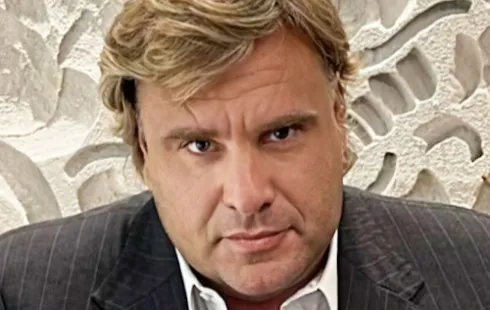
Ukrainian Diplomat Calls for Stronger Security Commitments Beyond NATO-Style Guarantees
Section: Politics
Recent research has uncovered that the PIEZO2 ion channel, known for its role in touch sensation, is also crucial in the formation of coronary vessels. This groundbreaking study, led by a team from the Max Delbrück Center for Molecular Medicine, highlights the potential implications for understanding congenital heart defects.
The PIEZO2 ion channel allows our skin to detect various mechanical stimuli, such as light touch or a gentle breeze. However, this recent investigation demonstrates that PIEZO2 plays an essential part in the development of coronary arteries and overall heart structure. The findings were published in Nature Cardiovascular Research.
Dr. Annette Hammes, who spearheaded the research, emphasized the collaborative effort at the Max Delbrück Center, which brought together multiple expert teams to explore vital biological processes. This research not only sheds light on possible causes of congenital heart diseases but also opens avenues for earlier diagnosis and treatment strategies. It suggests that PIEZO2 could serve as a promising new target for treating cardiovascular diseases.
Using mouse models, Dr. Mireia Pampols-Perez, the study's lead author, demonstrated that without PIEZO2, the development of coronary arteries is significantly impaired. In its absence, these vessels tend to remain excessively narrow or branch in irregular patterns, which hampers oxygen delivery to the heart muscle. Furthermore, abnormal growth patterns were noted in mice with an overactive variant of PIEZO2, which is related to the rare genetic disorder known as Marden-Walker syndrome. Both scenarios lead to thickening of the heart muscle tissue, particularly in the left ventricle, likely due to abnormal vascular development.
Genetic studies indicate that mutations in the PIEZO2 gene may correlate with various cardiovascular issues in humans, including heart failure and hypertension. Hammes pointed out that disruptions in this ion channel during the embryonic phase might lead to subtle yet significant changes in vascular structures that can manifest as serious heart complications later in life or under physical stress.
While PIEZO2 is primarily active during embryonic development in endothelial cells that line coronary arteries, there is evidence suggesting it may be reactivated in adults under specific conditions, potentially supporting blood vessel healing. This finding holds significant promise for future treatments in cases of coronary artery disease or post-myocardial infarction.
To determine if these findings are applicable to humans, the research team is collaborating with the Helmholtz Institute for Translational AngioCardioScience and the Max Delbrück Center's Pluripotent Stem Cell Technology Platform. They are investigating how PIEZO2 expression can be influenced in human cells derived from pluripotent stem cells.
This new research enhances our understanding of congenital heart defects and broadens the genetic factors that could be instrumental in diagnostics and preventive measures. The ultimate goal is to facilitate earlier detection of genetically induced cardiovascular diseases and potentially devise strategies for their prevention.

Section: Politics

Section: Fashion

Section: News

Section: Business

Section: Fashion

Section: Business

Section: Arts

Section: Politics

Section: Health Insurance

Section: News
Both private Health Insurance in Germany and public insurance, is often complicated to navigate, not to mention expensive. As an expat, you are required to navigate this landscape within weeks of arriving, so check our FAQ on PKV. For our guide on resources and access to agents who can give you a competitive quote, try our PKV Cost comparison tool.
Germany is famous for its medical expertise and extensive number of hospitals and clinics. See this comprehensive directory of hospitals and clinics across the country, complete with links to their websites, addresses, contact info, and specializations/services.
Und das ist gut so! is a delightful Christmas comedy that tackles the complexities of love and relationships. The story revolves around Stephanie and Bernd, who have crossed the line by cheating on their spouses and, unexpectedly, falling in love with each other. The plot thickens as Bernd realizes...



No comments yet. Be the first to comment!